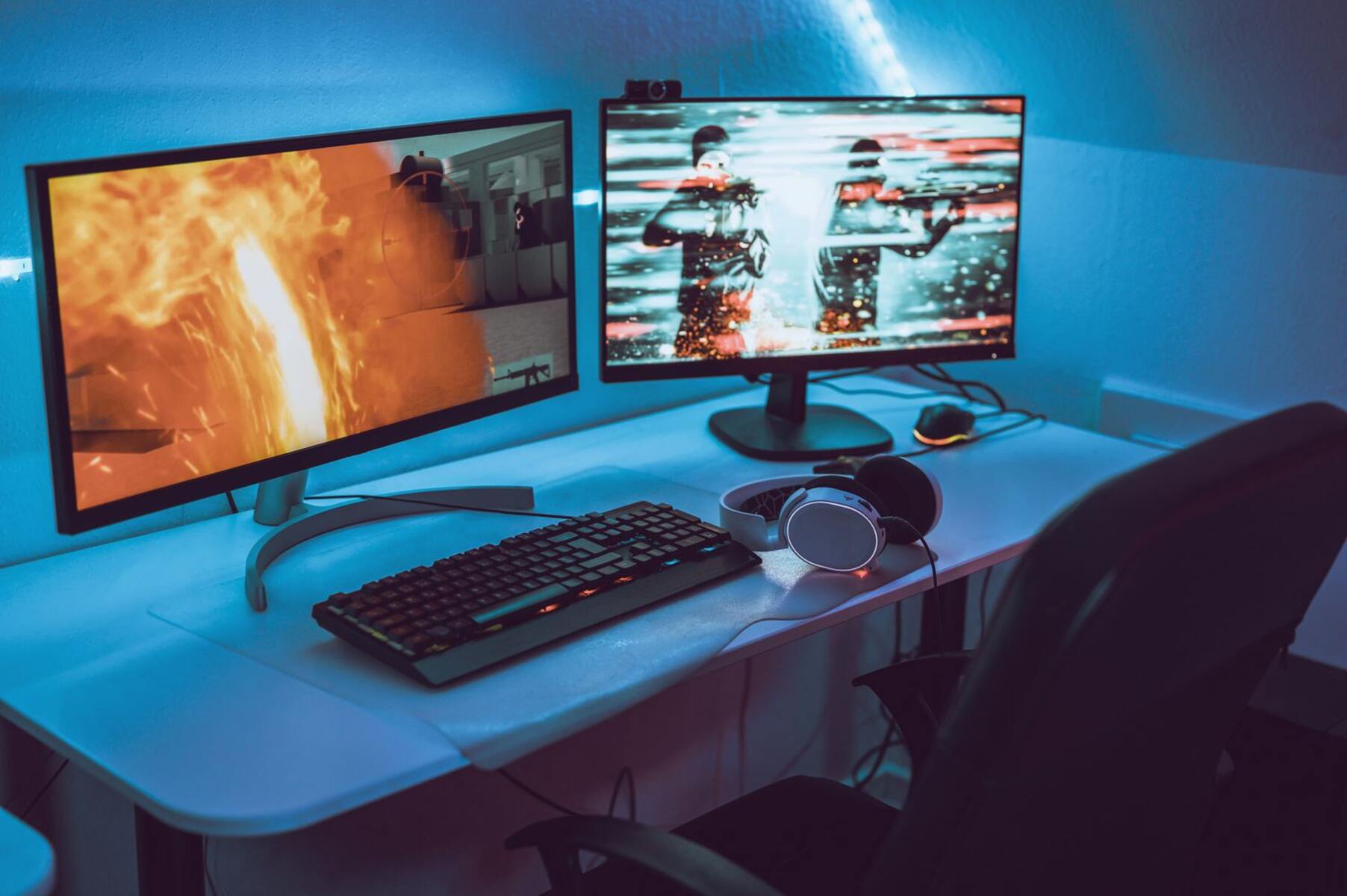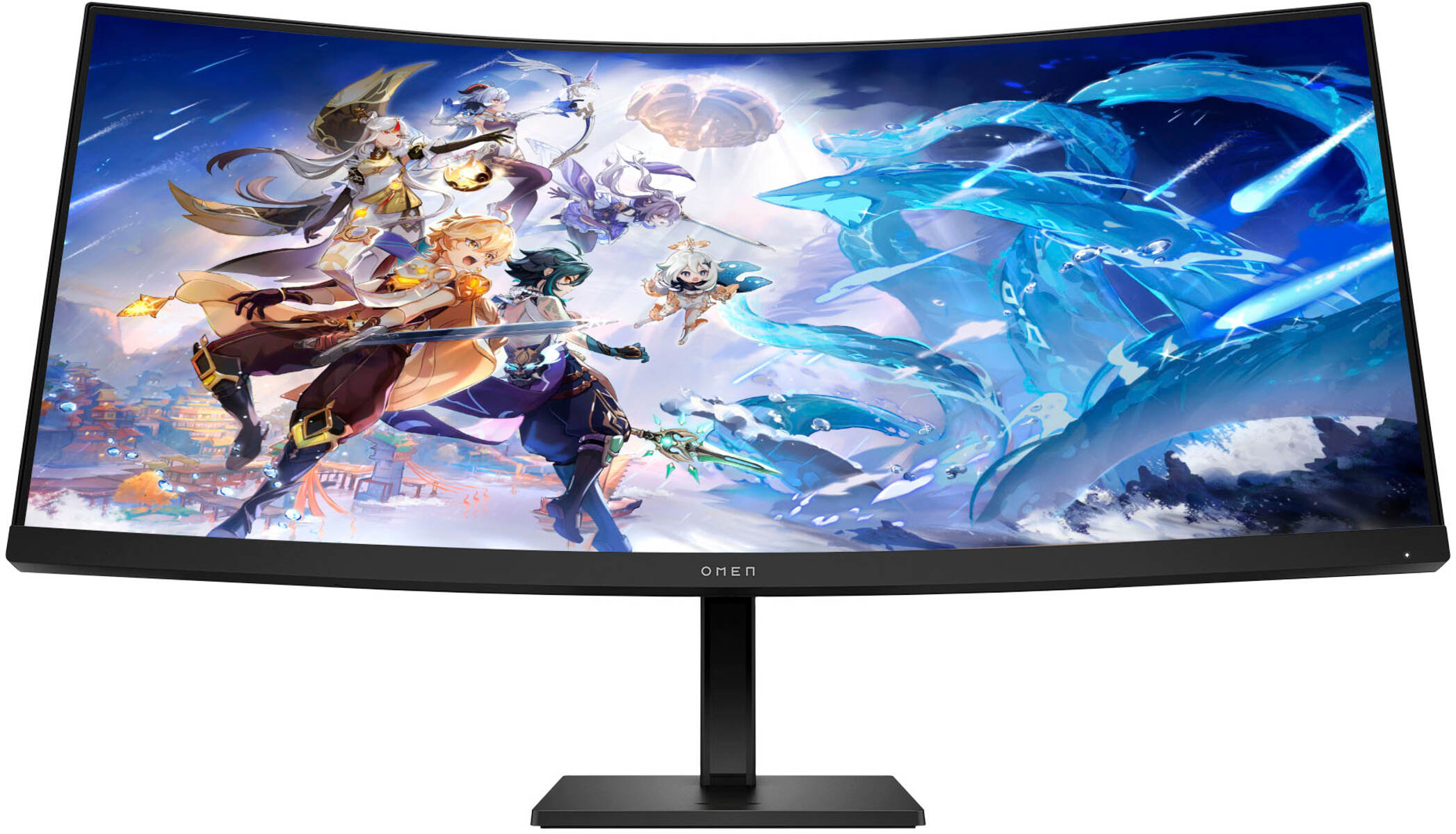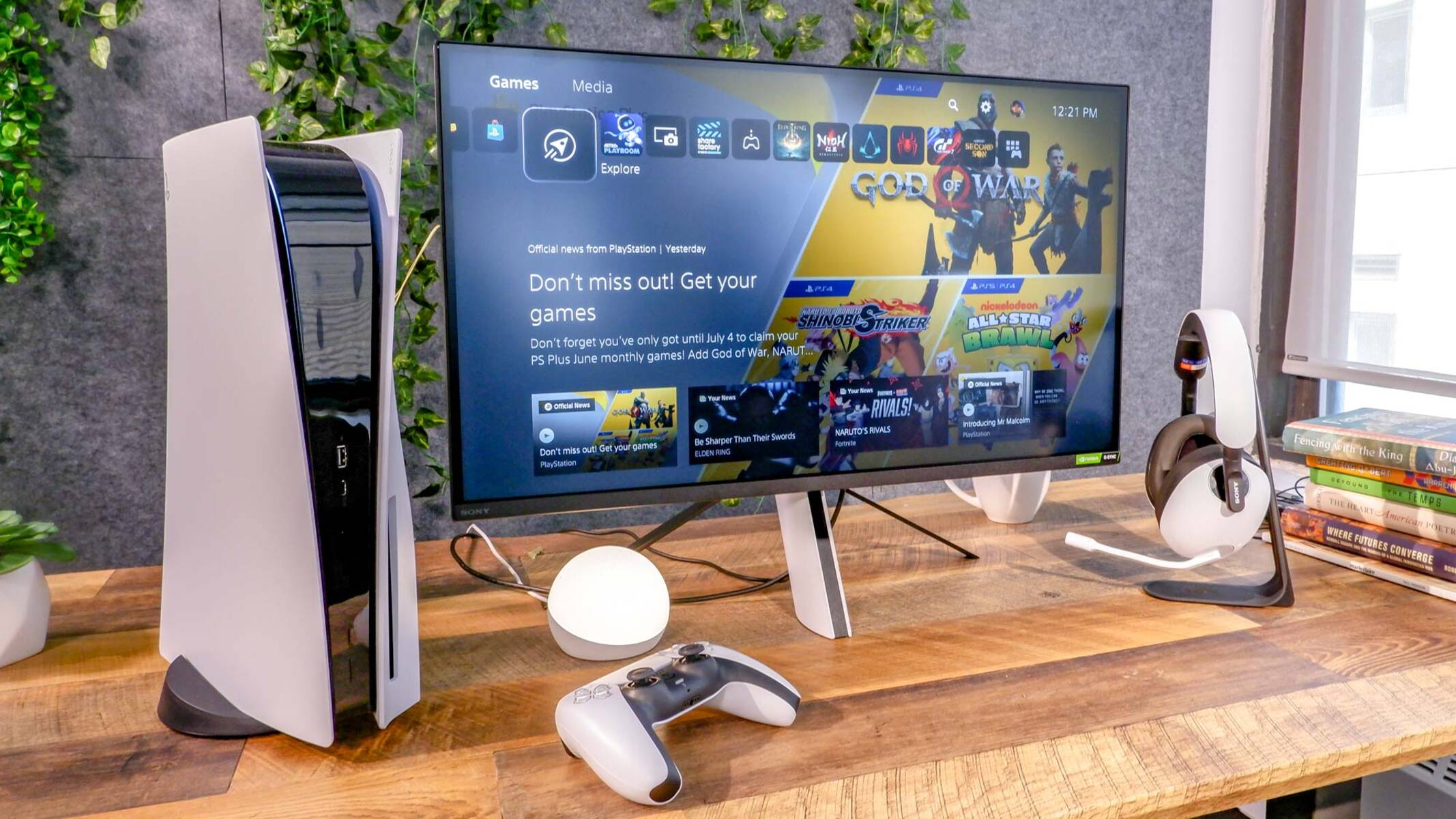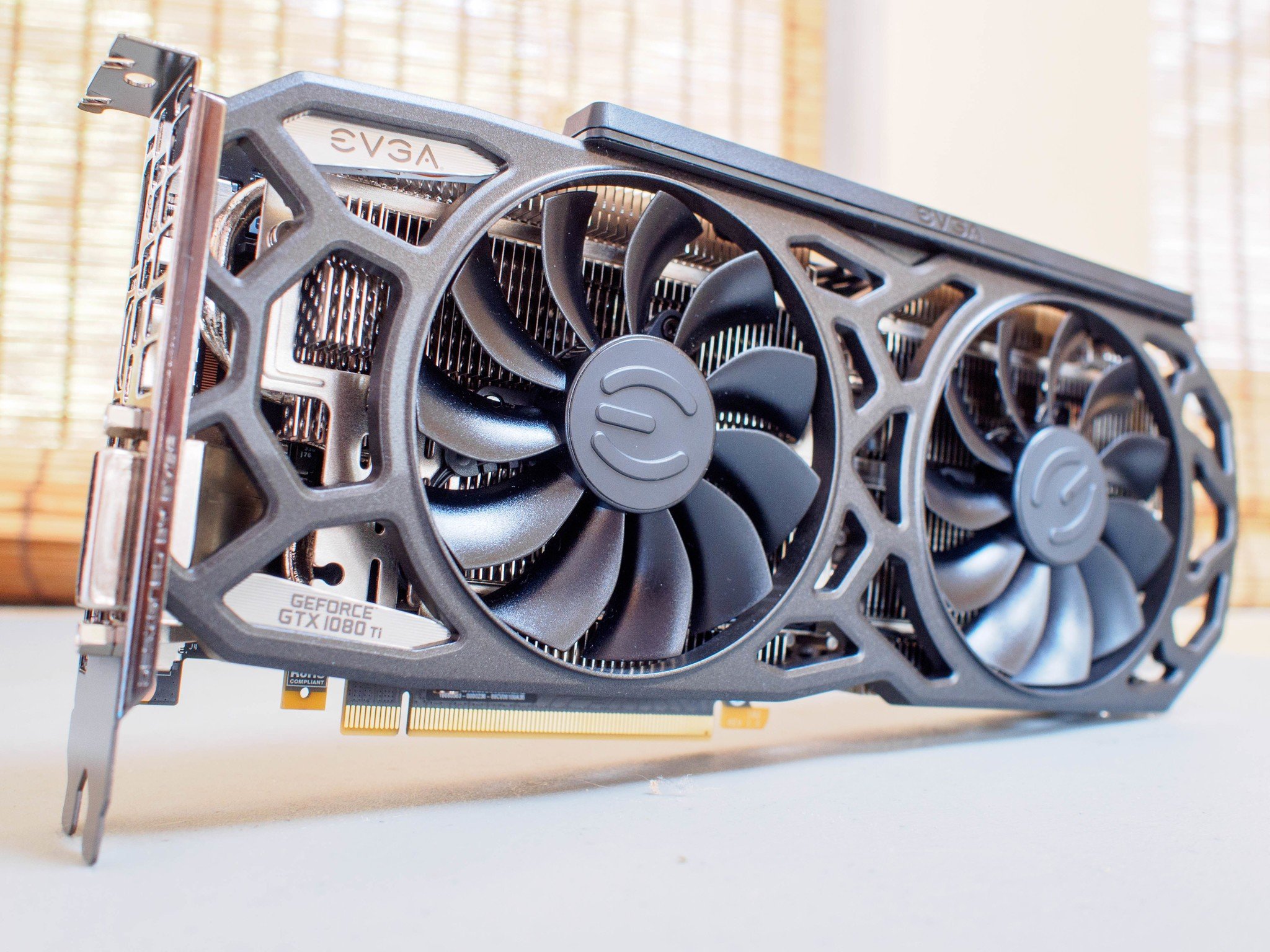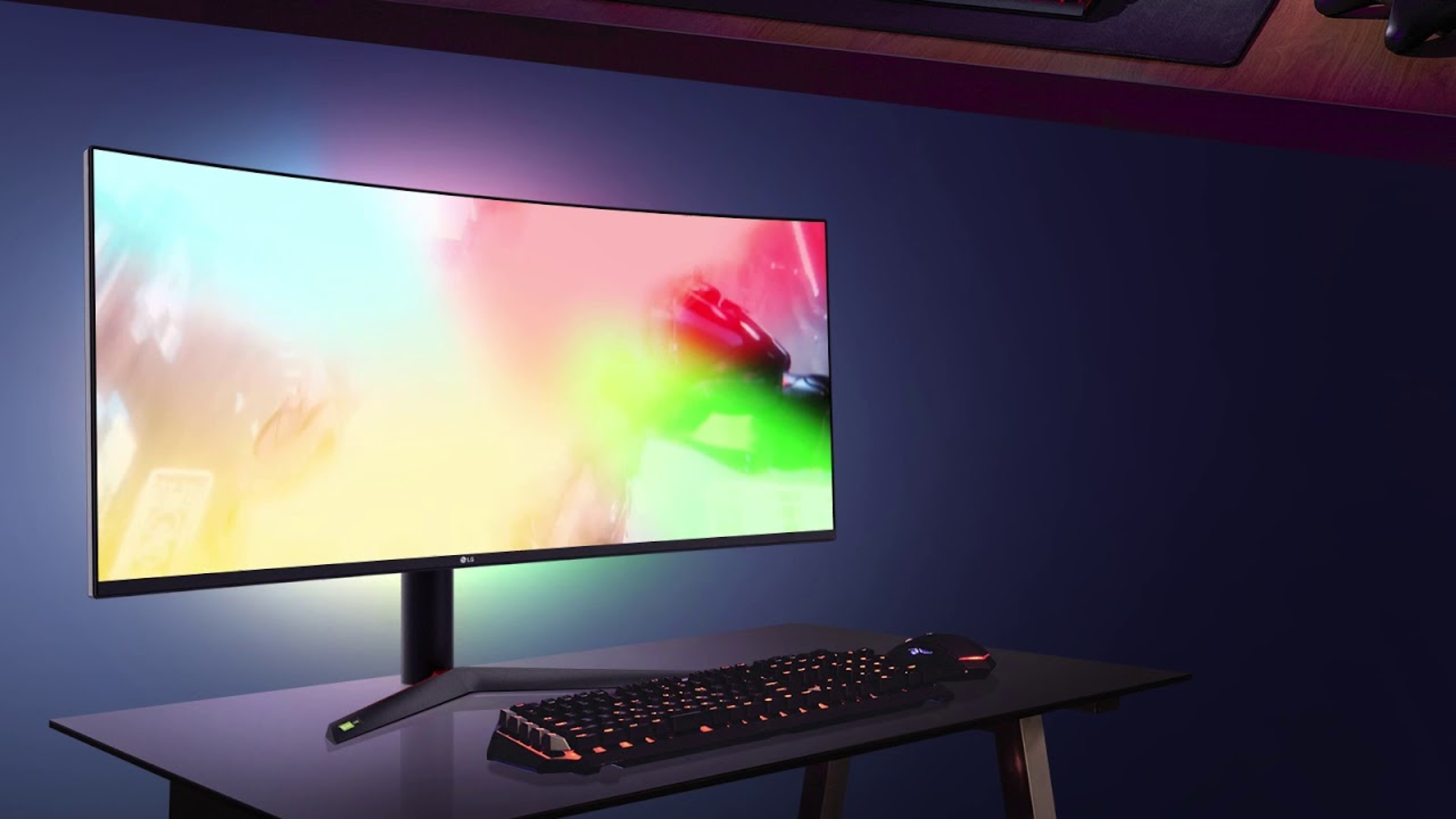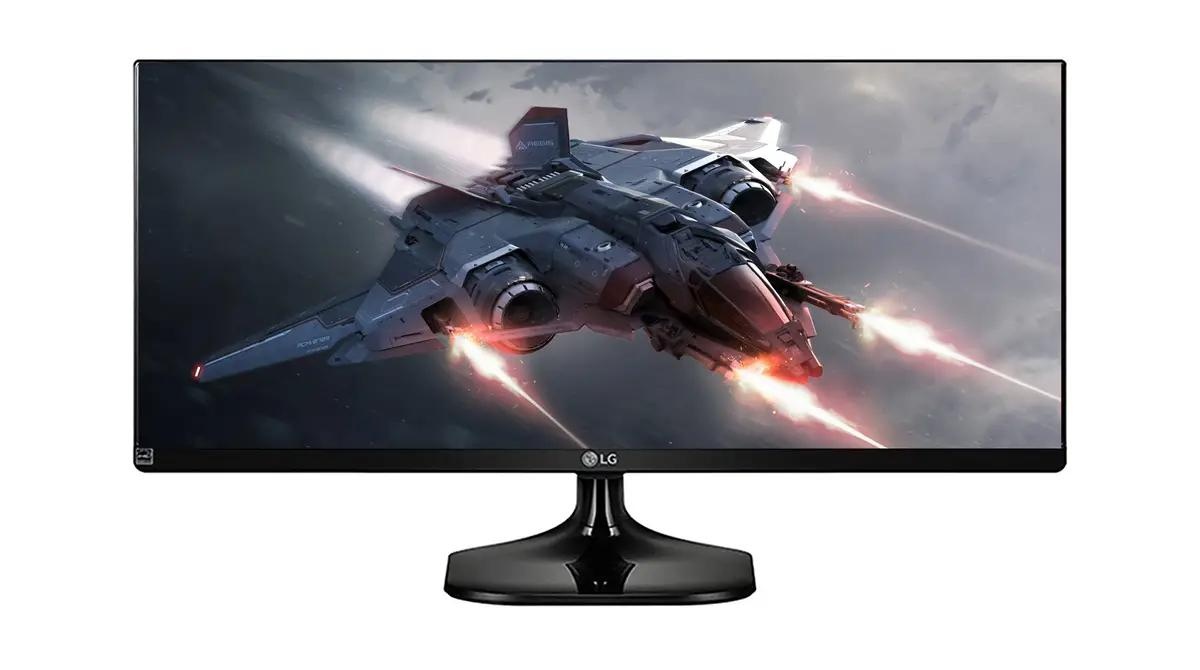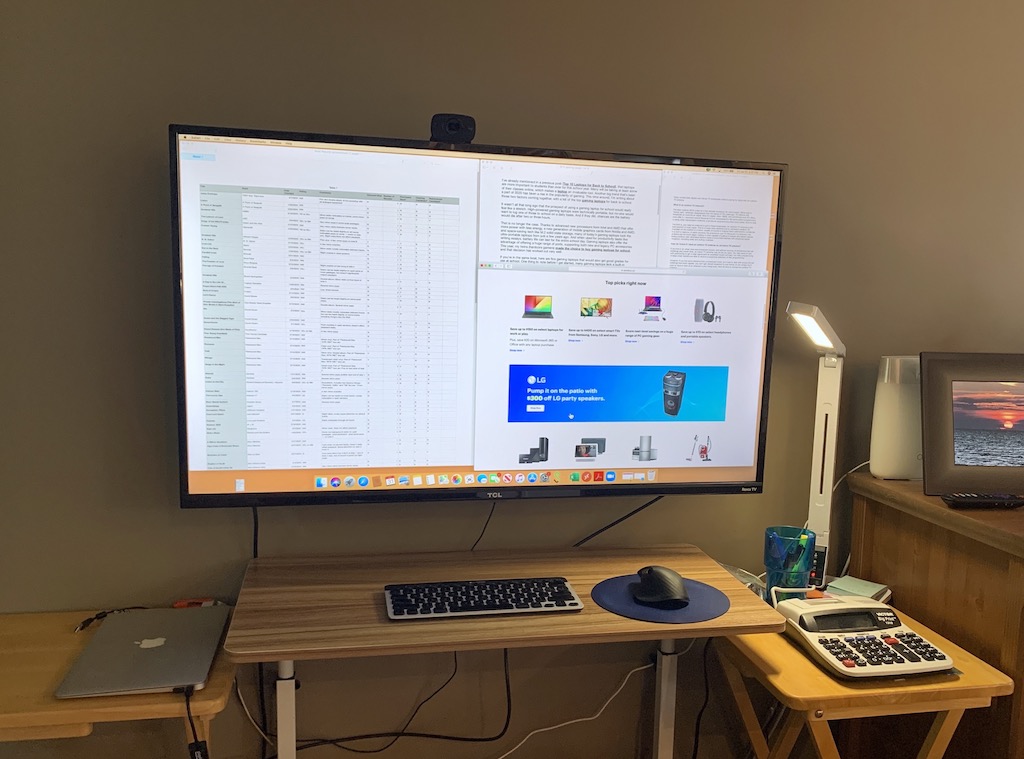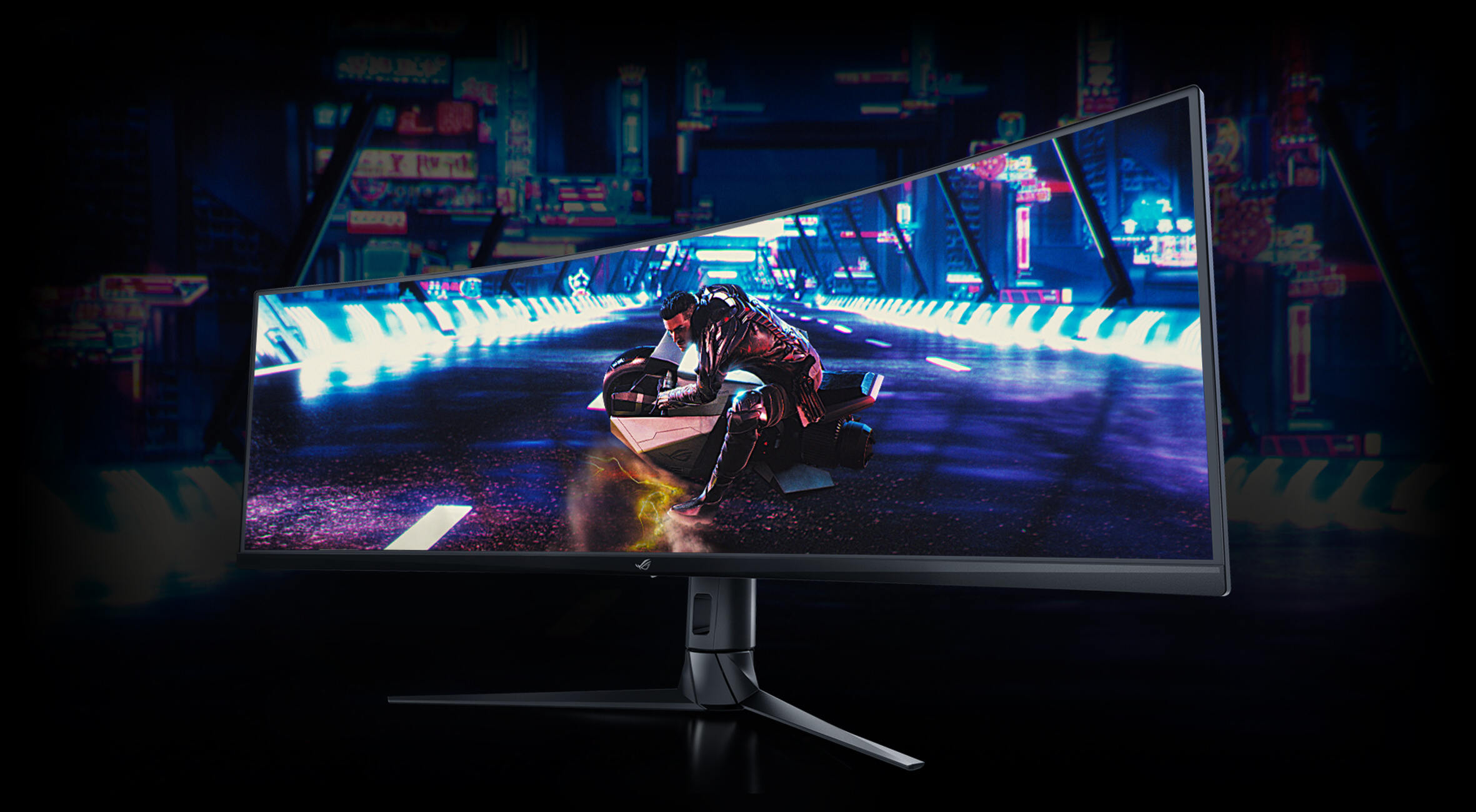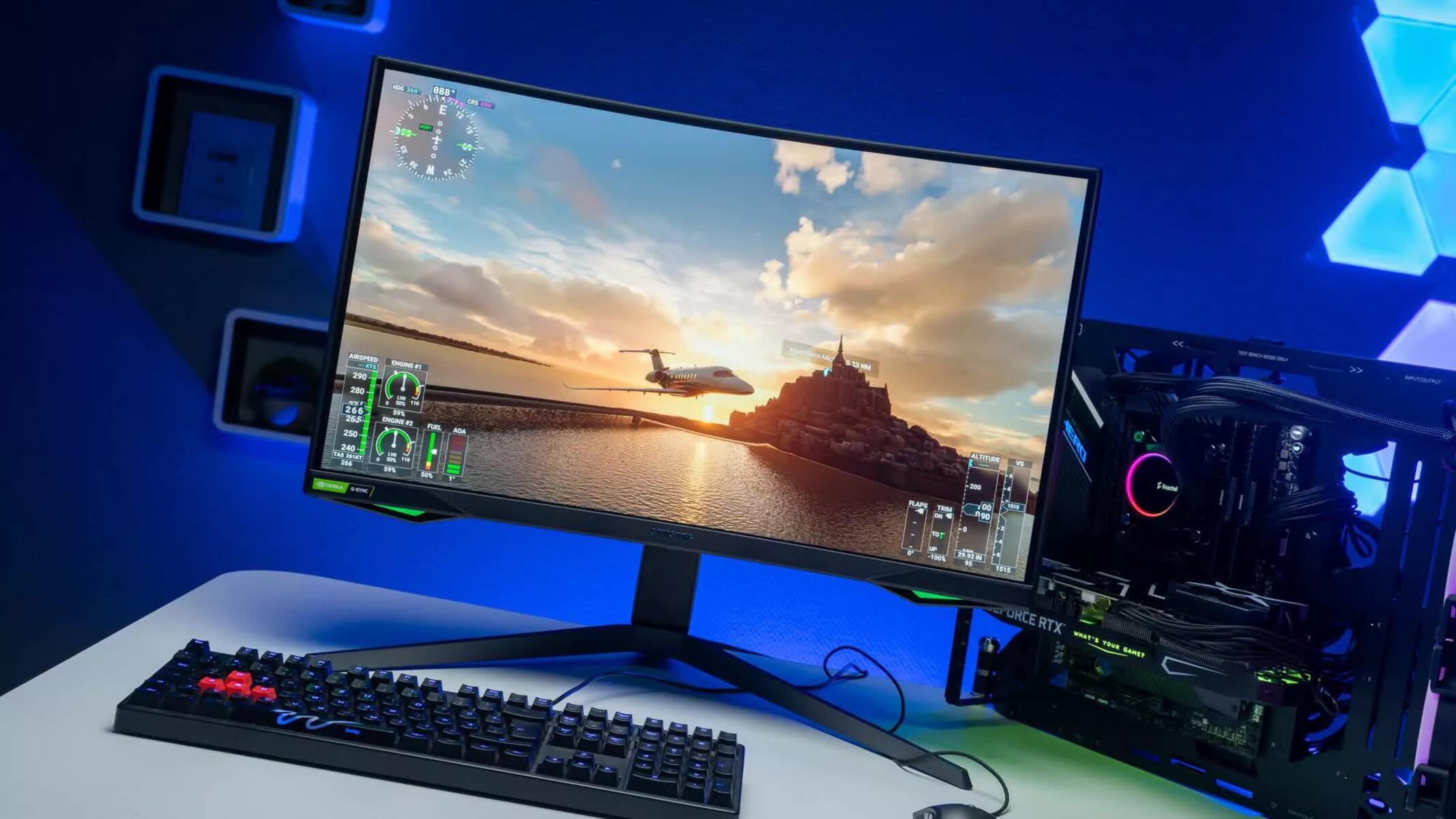Introduction
When it comes to gaming, having the right monitor can make all the difference in the world. A high-quality gaming monitor not only provides you with crisp, vibrant visuals but also enhances your overall gaming experience. Whether you’re a casual gamer or a competitive player, choosing the right gaming monitor is crucial for achieving optimal performance.
With a wide range of options available in the market, finding the perfect gaming monitor can be a daunting task. There are various factors to consider, such as display resolution, refresh rate, response time, panel type, and more. Each of these factors plays a significant role in defining the quality of your gaming experience.
In this article, we will explore the essential factors that you should consider when choosing a gaming monitor. We will delve into the technical aspects and help you understand how each parameter impacts your gameplay. By the end of this guide, you will have a clearer understanding of what to look for in a gaming monitor that meets your needs and preferences.
So, whether you’re into fast-paced action games or immersive open-world adventures, read on to discover the key features and specifications that will help you find the gaming monitor of your dreams.
Importance of a Gaming Monitor
A gaming monitor is a critical component of any gaming setup. It serves as the window through which you experience the virtual world of your favorite games. The importance of a gaming monitor cannot be overstated, as it directly impacts your gameplay and overall enjoyment. Here are a few reasons why having the right gaming monitor is essential:
Visual Clarity and Detail: A high-resolution gaming monitor allows you to see every detail and texture in your games. Whether it’s the intricate details of a character’s costume or the fine textures of a virtual world, a gaming monitor with a high display resolution brings your games to life.
Smooth and Fluid Gameplay: The refresh rate of a gaming monitor determines how many frames it can display per second. Higher refresh rates, such as 144Hz or 240Hz, provide smoother and more fluid gameplay, reducing motion blur and giving you a competitive edge in fast-paced games.
Responsive and Quick Reactions: The response time of a gaming monitor refers to how quickly it can change from one color to another. A low response time, usually measured in milliseconds (ms), ensures that there is minimal display lag, allowing you to react swiftly in critical gaming moments.
Color Accuracy and Vibrancy: Gaming monitors with accurate color reproduction and vibrant displays enhance the visual experience by delivering vivid and realistic colors. Whether you’re exploring lush landscapes or engaging in intense battles, a monitor with excellent color accuracy elevates your gaming immersion.
Wide Viewing Angles: Gaming monitors with wide viewing angles ensure that you can enjoy consistent and accurate colors, even when viewing the screen from different positions. This is particularly important for multiplayer games, where you may be playing with friends or in a competitive setting.
By investing in a high-quality gaming monitor, you can elevate your gaming experience to new heights. The right monitor not only enhances the visual clarity, response time, and overall performance but also provides you with a competitive advantage in multiplayer games. It allows you to immerse yourself fully in the virtual worlds and enjoy your favorite games the way they were intended to be played.
Factors to Consider when Choosing a Gaming Monitor
Choosing the right gaming monitor can be a challenging task, given the multitude of options available in the market. However, by considering the following factors, you can make an informed decision and find the perfect gaming monitor that suits your needs:
- Display Resolution: The display resolution determines the clarity and detail of the visuals. Common resolutions for gaming monitors are Full HD (1920×1080), Quad HD (2560×1440), and 4K Ultra HD (3840×2160). Higher resolutions provide sharper images, but keep in mind that they require more powerful graphics cards for optimal performance.
- Refresh Rate: The refresh rate indicates how many times per second the monitor can refresh the image. A higher refresh rate, such as 144Hz or 240Hz, offers smoother and more fluid motion, reducing blurring and ghosting during fast-paced gameplay.
- Response Time: The response time refers to how quickly pixels can change from one color to another. A lower response time, measured in milliseconds (ms), ensures minimal motion blur and allows for crisp and responsive gameplay.
- Panel Type: There are three common panel types: Twisted Nematic (TN), In-Plane Switching (IPS), and Vertical Alignment (VA). TN panels provide fast response times but may have poorer color accuracy. IPS panels offer excellent color reproduction and wide viewing angles, but have slightly slower response times. VA panels provide deep blacks and high contrast ratios, making them suitable for immersive gaming experiences.
- Screen Size and Aspect Ratio: The screen size and aspect ratio depend on personal preference and gaming setup. Larger screens offer more immersive visuals, but they may also require a greater viewing distance. The aspect ratio determines the width and height of the screen, with 16:9 being the most common for gaming.
- Connectivity Options: Ensure that the gaming monitor has the necessary ports to connect to your gaming devices, such as HDMI, DisplayPort, or USB-C. Additionally, check if it supports features like HDCP (High-bandwidth Digital Content Protection) for viewing protected content, as well as audio output options like built-in speakers or headphone jacks.
- Adaptive Sync Technology: Adaptive Sync technologies, such as AMD FreeSync or NVIDIA G-Sync, synchronize the monitor’s refresh rate with the graphics card, reducing screen tearing and stuttering for a smoother gaming experience. Check if your gaming monitor supports the appropriate adaptive sync technology for your graphics card.
- HDR Support: High Dynamic Range (HDR) technology enhances the color and contrast of the visuals, providing a more lifelike and immersive gaming experience. Look for gaming monitors that support HDR, as it can significantly enhance the visual quality of compatible games.
- Ergonomics and Adjustability: Consider the monitor’s ergonomics and adjustability features, such as tilt, swivel, height adjustment, and the ability to mount on a VESA-compatible stand. These features allow you to optimize the viewing angle and ensure comfortable gaming sessions.
- Price and Budget: Finally, determine your budget and consider the price-to-performance ratio of the gaming monitor. While higher-end monitors offer advanced features and specifications, it’s essential to find a balance between your desired features and your budget constraints.
By evaluating these factors and prioritizing your preferences and gaming needs, you can make an informed decision and choose a gaming monitor that provides you with an immersive and optimized gaming experience.
Display Resolution
The display resolution of a gaming monitor is one of the most important factors to consider when choosing the right monitor for your gaming setup. It determines the level of clarity and detail that you will experience in your games. Display resolutions are typically measured in pixels, with higher numbers indicating a greater number of pixels on the screen.
The most common display resolutions for gaming monitors are:
- Full HD (1920×1080): Also known as 1080p, this resolution provides a good balance between performance and visual quality. It is suitable for smaller screen sizes and can deliver sharp and detailed visuals.
- Quad HD (2560×1440): Also known as 1440p, this resolution offers a significant increase in detail compared to Full HD. It is often preferred by gamers who want a higher level of clarity and detail without straining their graphics card too much.
- 4K Ultra HD (3840×2160): Also known as 4K, this resolution provides the highest level of detail and clarity available in consumer gaming monitors. With four times the number of pixels compared to Full HD, it delivers stunning visuals, showcasing even the finest details in games.
When choosing a display resolution, it’s essential to consider the size of the gaming monitor and the capability of your graphics card. Higher resolutions require more processing power, so if your graphics card is not powerful enough, you may experience lag or reduced frame rates.
While 4K resolution may seem enticing, it is worth noting that it requires a high-end graphics card to run games smoothly at this resolution. It may be more suitable for larger screen sizes, such as 27 inches or above, where the increased pixel density can be fully appreciated.
On the other hand, if you have a smaller budget or a mid-range graphics card, Full HD or Quad HD resolutions can still provide an excellent gaming experience with smooth frame rates.
In the end, the choice of display resolution depends on your personal preferences and the capabilities of your gaming setup. Consider the trade-off between visual quality and performance, and choose a resolution that provides the right balance for your gaming needs.
Refresh Rate
The refresh rate is a crucial factor to consider when selecting a gaming monitor. It refers to how many times the screen can refresh the image per second. The refresh rate is measured in Hertz (Hz), and it impacts the smoothness and fluidity of your gaming experience.
A higher refresh rate provides a more seamless viewing experience by reducing motion blur and making fast-moving images appear smoother. The standard refresh rate for most monitors is 60Hz, which means the screen refreshes the image 60 times per second. However, gaming monitors with higher refresh rates, such as 144Hz or even 240Hz, have become increasingly popular among gamers for their ability to deliver more fluid gameplay.
Higher refresh rates are especially beneficial for fast-paced games that involve quick reactions and precise aiming, such as first-person shooters or racing games. With a higher refresh rate, the image on the screen will update more frequently, allowing you to react faster to in-game events and making the overall gameplay experience more immersive.
It’s important to note that to take full advantage of a higher refresh rate, your graphics card must be capable of producing enough frames per second to match the monitor’s refresh rate. For example, if you have a 144Hz monitor, your graphics card needs to consistently deliver at least 144 frames per second (FPS) for optimal performance.
Keep in mind that the refresh rate alone does not guarantee a smoother gaming experience. The overall performance of your system, including the graphics card and CPU, plays a crucial role as well. Ensure that your gaming rig can handle higher frame rates before investing in a high-refresh-rate monitor.
Ultimately, the decision to go for a higher refresh rate depends on the types of games you play and your budget. If you primarily play fast-paced, competitive games and have a capable gaming setup, a monitor with a higher refresh rate can significantly enhance your gaming experience. However, if you are on a tighter budget or primarily play slower-paced games, a monitor with a standard refresh rate may suit your needs just fine.
Consider your gaming preferences and the capabilities of your gaming setup to determine the ideal refresh rate for your gaming monitor. Strike a balance between performance, budget, and personal preference to optimize your gaming experience.
Response Time
The response time of a gaming monitor refers to how quickly it can change the color of a pixel from one shade to another. It is measured in milliseconds (ms), and it plays a significant role in determining how sharp and clear the fast-moving images appear on the screen.
A low response time ensures that the pixels can transition quickly, minimizing motion blur and ghosting, which can negatively impact the visual quality and overall gaming experience. The lower the response time, the more effectively the monitor can keep up with the fast-paced action in games.
For gaming purposes, it is generally recommended to choose a monitor with a response time of 5ms or less. This fast response time ensures that the monitor can keep up with rapid movements, providing crisp and sharp visuals during intense gaming sessions.
It’s worth noting that response time is closely related to the panel type of the monitor. TN (Twisted Nematic) panels typically have faster response times compared to IPS (In-Plane Switching) panels or VA (Vertical Alignment) panels. However, advancements in panel technology have reduced the response time gap, making IPS and VA panels viable options for gaming monitors.
While a low response time is desirable, it’s important to strike a balance with other factors such as color accuracy and viewing angles. Some gaming monitors may sacrifice color reproduction or viewing angles to achieve faster response times, so it’s essential to consider your preferences and prioritize the features that are most important to you.
Response time becomes especially crucial for competitive gaming, where quick reflexes and precise movements are essential. In fast-paced shooters or fighting games, a lower response time can provide a competitive edge, allowing you to react swiftly to in-game actions.
However, if you primarily play slower-paced games or prioritize color accuracy and wide viewing angles, a slightly higher response time may not significantly impact your gaming experience. Consider the types of games you play and the visual qualities you value to determine the ideal response time for your gaming monitor.
Overall, when choosing a gaming monitor, consider a low response time to minimize motion blur and ghosting during fast-paced gameplay. Take into account your gaming preferences and prioritize other features that are important to you to find the perfect balance and enhance your gaming experience.
Panel Type
The panel type of a gaming monitor refers to the technology used in creating the display. Each panel type has its own set of characteristics, including color accuracy, viewing angles, response time, and contrast ratio. Understanding the different panel types will help you choose a gaming monitor that suits your needs and preferences.
Twisted Nematic (TN) Panels: TN panels are known for their fast response times, making them ideal for fast-paced gaming. They offer high refresh rates and low input lag, resulting in smooth and responsive gameplay. However, TN panels typically have narrower viewing angles and may exhibit poorer color accuracy and contrast compared to other panel types.
In-Plane Switching (IPS) Panels: IPS panels are renowned for their excellent color reproduction and wide viewing angles. They offer more accurate and vibrant colors, making them a popular choice among gamers who prioritize visual quality. However, IPS panels generally have slightly slower response times compared to TN panels, which may result in minimal motion blur during fast-moving scenes.
Vertical Alignment (VA) Panels: VA panels provide deep blacks and high contrast ratios, enhancing the visual experience in dark or contrast-rich scenes. They offer good color reproduction and wider viewing angles than TN panels. However, VA panels may have slightly slower response times, which can lead to some motion blur in fast-paced games.
It’s important to note that advancements in display technology have made the differences between panel types less pronounced in recent years. For example, IPS panels now offer faster response times, although they may still be slightly slower than TN panels. Similarly, TN and VA panels have improved in terms of color reproduction and viewing angles, although they may not match the levels of IPS panels.
When choosing a gaming monitor, consider your priorities. If you prioritize fast response times and competitive gaming, a TN panel may be the better choice. On the other hand, if visual quality and accurate colors are more important to you, an IPS or VA panel would be a better fit.
Keep in mind that panel type is only one aspect to consider when selecting a gaming monitor. Other factors, such as display resolution, refresh rate, and response time, also impact your gaming experience. Consider a combination of these factors to find the perfect balance that suits your gaming needs.
Ultimately, the choice of panel type boils down to personal preference and the specific requirements of your gaming setup. Evaluate the trade-offs between response time, color accuracy, viewing angles, and contrast ratio to make an informed decision and select a gaming monitor with a panel type that enhances your gaming experience.
Screen Size and Aspect Ratio
When choosing a gaming monitor, the screen size and aspect ratio play a significant role in determining your gaming experience. These factors impact not only the immersion but also the practicality and compatibility of the monitor with your gaming setup.
Screen Size: The screen size refers to the diagonal measurement of the monitor’s display. Gaming monitors come in various sizes, ranging from compact 24-inch displays to expansive 34-inch ultrawide monitors. The screen size you choose depends on your personal preference, the available space in your gaming area, and the viewing distance.
Larger screens offer a more immersive gaming experience by filling your field of vision, making you feel more engrossed in the game. They also provide more screen real estate, allowing for a better overview in strategy games or multitasking. However, larger screens may require a greater viewing distance, so ensure that you have enough space to accommodate the monitor’s size comfortably.
Smaller screens, on the other hand, can be more practical for those with limited space or for gamers who prefer to sit closer to the screen. They are also generally more budget-friendly. However, keep in mind that smaller screens may result in a less immersive experience, especially if you are playing visually-intensive games or prefer a wider field of view.
Aspect Ratio: The aspect ratio represents the width compared to the height of the screen. The most common aspect ratio for gaming monitors is 16:9, which provides a standard widescreen format. This aspect ratio is suitable for most games and media, offering a wide field of view without stretching or distorting the image.
There are also ultrawide monitors with a 21:9 aspect ratio, which provide an even wider field of view. Ultrawide monitors offer a more immersive gaming experience by extending your peripheral vision. They are particularly advantageous in racing games, flight simulators, and open-world games where a wider perspective can enhance gameplay.
Consider your gaming preferences and the types of games you play when choosing the screen size and aspect ratio. If you enjoy immersive experiences and have the space, a larger screen size and ultrawide aspect ratio may be worth considering. If practicality and budget are your priorities, a smaller screen size and standard 16:9 aspect ratio may be more suitable.
Remember to also consider the resolution and pixel density in conjunction with the screen size. Higher-resolution displays may offer sharper visuals, but they may require more powerful hardware to run games smoothly.
Ultimately, finding the right balance between screen size and aspect ratio depends on your personal preferences, available space, and gaming requirements. Consider the trade-offs and choose a gaming monitor that provides an optimal balance between immersion, practicality, and compatibility with your gaming setup.
Connectivity Options
When selecting a gaming monitor, it’s important to consider the available connectivity options. The connectivity options determine how you can connect your gaming devices to the monitor, ensuring optimal compatibility and functionality.
Here are some common connectivity options to look for in a gaming monitor:
- HDMI (High-Definition Multimedia Interface): HDMI is the most common and versatile connection port found in gaming monitors. It supports both audio and video signals and can connect to a wide range of devices, including gaming consoles, PCs, and streaming devices. Ensure that the gaming monitor has at least one HDMI port, preferably HDMI 2.0 or higher for both 1080p and 4K resolutions.
- DisplayPort: DisplayPort is another popular connectivity option known for its high bandwidth and support for high refresh rates and high resolutions. It is commonly found in gaming monitors and offers smooth transmission of audio and video signals. Look for a gaming monitor with DisplayPort 1.2 or higher for optimal performance.
- USB-C: Some modern gaming monitors come equipped with USB-C ports that support video and data transfer, as well as power delivery. USB-C connectivity allows for streamlined connectivity, especially for laptops and devices that support USB-C connectivity. It eliminates the need for additional adapters or cables.
- Audio Output: If you prefer to use headphones or external speakers for your gaming audio, check if the gaming monitor has an audio output, such as a headphone jack or a dedicated audio output port. This allows you to easily connect your audio devices and enjoy high-quality sound without any additional setup.
- Other Ports: Consider additional ports that might be useful for your gaming setup, such as USB ports for connecting peripherals or a built-in USB hub for easy access to your gaming accessories. HDMI and DisplayPort Out ports are also valuable if you want to connect multiple monitors for a multi-display setup.
Ensure that the gaming monitor has the necessary connectivity options to match your gaming devices. Check the compatibility requirements of your gaming devices and verify that the monitor’s ports align with those requirements. This will ensure a seamless connection and optimal performance.
Additionally, if you plan to use your gaming monitor to watch content from external sources, consider connectivity options like HDCP (High-bandwidth Digital Content Protection), which allows for the encrypted playback of protected content, such as Blu-ray discs or streaming services.
By considering the connectivity options, you can future-proof your gaming monitor and ensure that it accommodates your current and future gaming needs. A well-connected monitor allows for easy integration with a variety of gaming devices and accessories, enhancing your overall gaming experience.
Adaptive Sync Technology
Adaptive Sync technology is an essential feature to consider when choosing a gaming monitor. It helps to eliminate screen tearing and provides a smoother and more enjoyable gaming experience. Adaptive Sync technology synchronizes the refresh rate of the monitor with the output of the graphics card, resulting in a seamless and tear-free display.
There are two main types of Adaptive Sync technology:
- AMD FreeSync: Developed by AMD, FreeSync is an open-source technology that works with AMD graphics cards. It dynamically adjusts the monitor’s refresh rate to match the frame rate output of the graphics card. This synchronization avoids screen tearing and reduces input lag, enabling a smoother gaming experience. FreeSync is widely supported by a variety of gaming monitors at various price points.
- NVIDIA G-Sync: Developed by NVIDIA, G-Sync is a proprietary technology that also aims to eliminate screen tearing and provide a smoother gaming experience. Unlike FreeSync, G-Sync requires an NVIDIA graphics card to function properly. G-Sync monitors typically have a dedicated module that controls the refresh rate, which can result in higher costs compared to FreeSync monitors. However, G-Sync monitors often have additional features such as variable overdrive for improved motion clarity.
When selecting a gaming monitor, consider whether you have an AMD or NVIDIA graphics card and choose a monitor that supports the corresponding Adaptive Sync technology. This ensures that you can take full advantage of the benefits offered by Adaptive Sync.
It’s important to note that some gaming monitors support both FreeSync and G-Sync, making them compatible with both AMD and NVIDIA graphics cards. These monitors are sometimes referred to as “G-Sync compatible” or “FreeSync Premium” monitors. They offer the flexibility to switch between Adaptive Sync technologies, regardless of your graphics card brand.
Adaptive Sync technology significantly enhances the gaming experience by providing smoother gameplay, reducing screen tearing, and minimizing input lag. It helps to create a more fluid and immersive gaming experience, especially in fast-paced and visually demanding games.
Whether you choose FreeSync or G-Sync largely depends on your existing graphics card and personal preferences. Consider your budget, preferred graphics card brand, and the availability of Adaptive Sync-enabled gaming monitors to make an informed decision.
By selecting a gaming monitor with Adaptive Sync technology, you can enjoy tear-free gaming and an overall smoother gameplay experience, enhancing your immersion and enjoyment of your favorite games.
HDR Support
High Dynamic Range (HDR) support is an important consideration when choosing a gaming monitor, as it can significantly enhance the visual quality and immersion of your gaming experience. HDR technology allows for a wider range of colors, greater contrast, and improved brightness levels, resulting in more lifelike and vibrant visuals.
With HDR, games that are designed to take advantage of this technology can deliver more accurate and realistic colors, bringing out finer details and creating a more immersive atmosphere. Darker scenes appear deeper and more impactful, while brighter scenes exhibit enhanced brightness and highlight details.
When choosing an HDR gaming monitor, consider the level of HDR support it offers. There are several different HDR standards, such as HDR10, HDR10+, Dolby Vision, and HLG (Hybrid Log-Gamma). HDR10 is the most common and widely supported standard, while HDR10+ and Dolby Vision offer additional enhancements and dynamic metadata for more precise HDR rendering.
It’s important to note that not all games and content support HDR, so ensure that the games you play are HDR-compatible before investing in an HDR gaming monitor.
Additionally, consider the brightness levels and local dimming capabilities of the HDR gaming monitor. A higher peak brightness (measured in nits) allows for greater brightness realism in HDR content, while local dimming improves contrast by selectively dimming or brightening specific areas of the screen.
Keep in mind that HDR performance can vary from monitor to monitor, even among those that claim HDR support. Look for gaming monitors that have been officially certified for HDR performance, such as VESA-certified DisplayHDR specifications, to ensure a reliable and consistent HDR experience.
Lastly, it’s worth noting that HDR requires more powerful hardware to fully appreciate its benefits. Ensure that your gaming device, such as your graphics card and console, is capable of supporting HDR content and delivering optimal performance for HDR gaming.
Overall, HDR support in a gaming monitor adds a new layer of visual fidelity and immersion to your gaming experience. By choosing a gaming monitor with HDR capabilities and considering factors such as HDR standards, peak brightness, local dimming, and hardware compatibility, you can enjoy breathtaking visuals that bring your games to life with extraordinary colors, contrast, and brightness.
Ergonomics and Adjustability
Considering the ergonomics and adjustability of a gaming monitor is essential for ensuring comfortable and optimal viewing experiences during long gaming sessions. Ergonomic features and adjustability options allow you to customize the monitor’s position and angle to accommodate your preferred sitting posture and viewing angle.
Tilt: Look for a gaming monitor that offers tilt adjustment, allowing you to tilt the screen up or down to find the most comfortable viewing angle. Tilting the monitor can help reduce neck and eye strain, especially if you frequently look up or down while gaming.
Height Adjustment: A gaming monitor with height adjustment enables you to raise or lower the screen to achieve the ideal eye level. Proper eye-level alignment helps reduce neck and shoulder strain, providing a more comfortable gaming experience. It also allows you to match the monitor’s height with the height of other displays in a multi-monitor setup.
Swivel: The ability to swivel the monitor left or right on its base allows for easy screen sharing or adjusting the viewing angle. This feature is beneficial if you frequently collaborate with others or need to show your gameplay to someone seated next to you.
Pivot: Some gaming monitors offer a pivot feature that allows for rotating the screen to a portrait orientation. This is particularly useful for tasks that require vertical space, such as coding, reading long documents, or browsing websites with vertical layouts. However, pivot functionality is less common in gaming monitors and is more commonly found in professional-oriented displays.
VESA Mount Compatibility: If you prefer a custom mounting setup or want to save desk space, ensure that the gaming monitor is VESA mount compatible. This allows you to attach the monitor to a compatible monitor arm or wall mount, providing more freedom in positioning and adjusting the screen to your liking.
Ergonomically designed gaming monitors with adjustable features help prevent discomfort and strain on your neck, back, and eyes. They allow you to find the optimal positioning for extended gaming sessions, promoting better posture and reducing the risk of musculoskeletal issues.
Consider your individual comfort needs, desk space, and gaming habits when evaluating the ergonomics and adjustability features of a gaming monitor. Finding the right combination of tilt, height adjustment, swivel, and pivot options, along with VESA mount compatibility, can significantly enhance the ergonomics of your gaming setup and contribute to a more enjoyable gaming experience.
Price and Budget
Price is an important factor to consider when choosing a gaming monitor, as it ultimately influences your budget and the features you can afford. Gaming monitors are available at various price points, ranging from budget-friendly options to high-end models with advanced features.
When determining your budget for a gaming monitor, think about your needs and priorities in terms of resolution, refresh rate, response time, panel type, and additional features. Consider the types of games you play and the level of performance you require to make an informed decision.
While it’s tempting to go for the top-of-the-line gaming monitors with all the latest features, it’s crucial to find a balance between your desired specifications and your budget constraints. Set a realistic budget and prioritize the features that are most important to you.
Fortunately, there are many budget-friendly gaming monitors available that still offer decent performance and essential features. These monitors may not have all the bells and whistles of higher-priced options, but they can still provide an enjoyable gaming experience.
If you have a higher budget, you can explore gaming monitors with advanced features such as higher resolutions, faster refresh rates, and better panel types. These options often come with additional benefits like better color accuracy, smoother gameplay, and enhanced visual quality.
Keep in mind that technology advances quickly, and while the latest gaming monitors may offer cutting-edge features, their prices may also be higher. Consider whether you need the latest features or if slightly older models can still meet your gaming needs at a more affordable price.
Conduct thorough research, read reviews, and compare prices to find the best gaming monitor within your budget range. Consider factors like warranty, customer support, and the reputation of the brand to ensure a reliable and cost-effective purchase.
Remember, the goal is to find a gaming monitor that provides a satisfying gaming experience while keeping within your budget. By finding the right balance between price and performance, you can make an informed decision and invest in a gaming monitor that meets your needs and offers the best value for your money.
Conclusion
Choosing the right gaming monitor is crucial for enhancing your gaming experience. With a plethora of options available, it’s important to consider the factors that align with your gaming needs and preferences. From display resolution and refresh rate to response time, panel type, and connectivity options, each specification plays a role in delivering optimal performance and visual quality.
A high-resolution gaming monitor with a fast refresh rate and low response time can provide crisp visuals and smooth gameplay, especially in fast-paced and competitive games. The panel type influences color accuracy, viewing angles, and contrast ratio, contributing to the overall visual immersion. Connectivity options ensure compatibility with your gaming devices and peripherals, while ergonomic features enhance comfort and reduce strain during long gaming sessions.
Other factors to consider include the presence of Adaptive Sync technology for tear-free gaming, HDR support for enhanced visual realism, and finding the right balance between screen size and aspect ratio based on personal preference and available space.
It’s important to strike a balance between the desired features and your budget. While higher-end gaming monitors may offer advanced specifications, there are budget-friendly options available that can still provide an enjoyable gaming experience.
Ultimately, the perfect gaming monitor will vary depending on individual preferences and specific gaming needs. Research thoroughly, read reviews, and consider your priorities to make an informed decision. Factor in compatibility with your gaming devices, warranty and customer support, and the reputation of the brand to ensure a reliable and satisfactory purchase.
By selecting the right gaming monitor, you can take your gaming experience to new heights, immersing yourself in rich, vibrant visuals, and enjoying smooth, responsive gameplay. Choose wisely, and let your gaming monitor be the window to a world of unparalleled gaming adventures.







